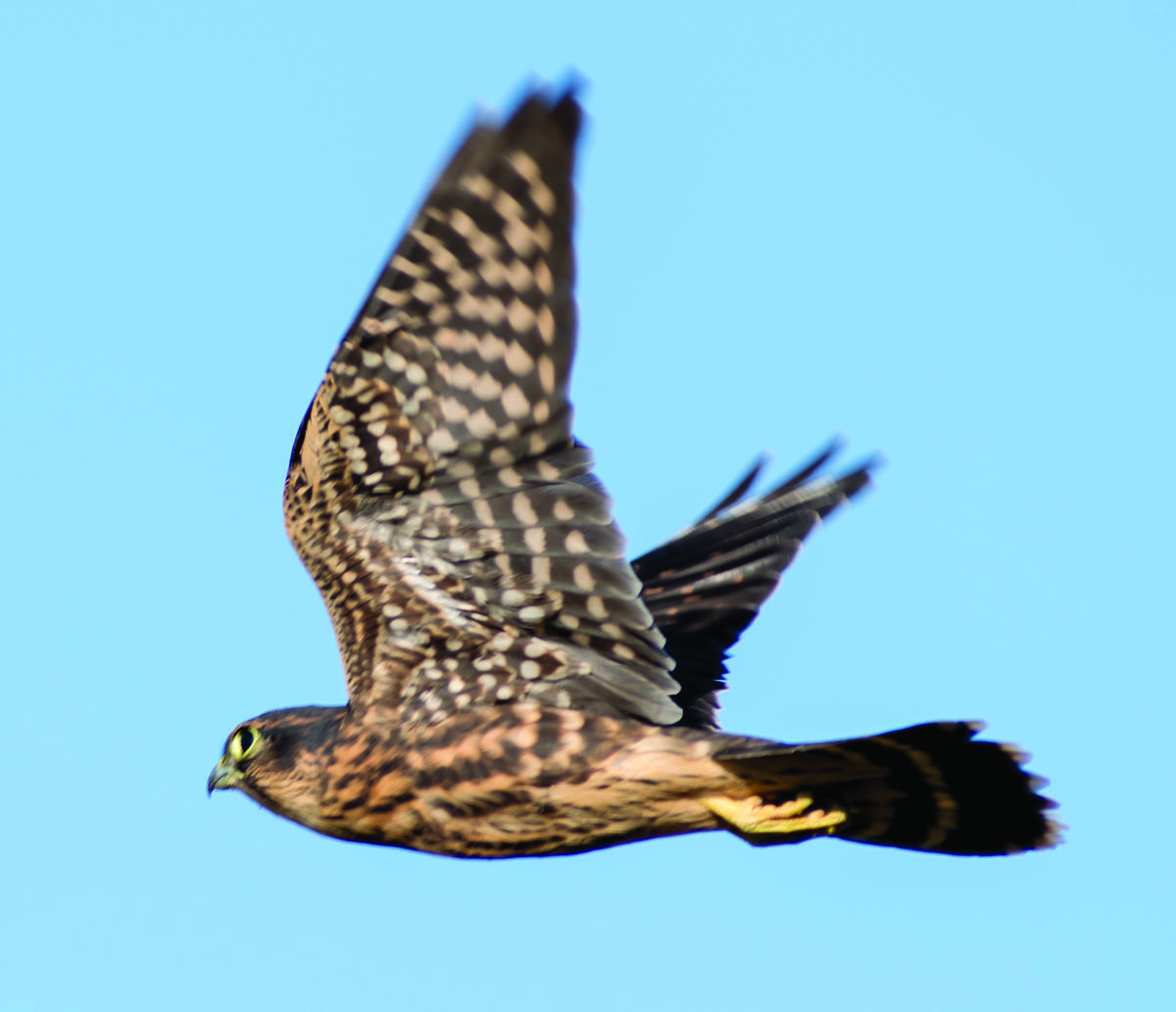by Gerry Smith, Consulting Ornithologist
In the last few years, on several islands in the St. Lawrence River, summer residents have noticed that suddenly the island is devoid of small birds. Mystified by this occurrence, people have been concerned. Actually there is no cause for concern, Merlin has landed on the island. No, not the sorcerer from King Arthur’s court but an avian wizard with nearly as many tricks that it uses to catch small birds. The Merlin is a medium sized falcon, slightly larger than the more familiar American Kestrel, but more powerful and with a pugnacious nature.
The Merlin breeds mostly in northern forested areas of the Northern Hemisphere. In North America, the open Boreal Forest stretching from Newfoundland to Alaska is its primary stronghold. Feeding mainly on small and medium sized birds, this falcon surprises and captures its mobile prey with swift flight attacks. As with all falcon species, Merlin do not build a nest. Instead they usually occupy the abandoned nest of a crow or a hawk from a previous year. Wherever suitable used housing is available a pair can raise a brood. When they are present, small birds often make themselves scarce.
Merlin populations in North America were greatly impacted by DDT in the same way as Bald Eagle and Peregrine Falcon. Possessing a higher reproductive rate, 3-5 young per pair, than those larger species more Merlins survived the DDT disaster. By the 1990s a clear population recovery was underway from the very low levels of the late 1960s and 1970s.
First noticed as increased numbers of Merlin migrating through our area, this trend has continued. During the last three decades extraordinary changes have occurred to local Merlin populations as a result of rapid adaptation.
Such major changes in a native species, as a result of adaptation over a relatively short period, are most unusual. Formerly strictly a migrant bird passing through New York, they now winter and breed within the state. In the Thousand Islands region, this species was unknown as a wintering bird until the end of the last century. Now individuals regularly are present between November and March. Usually these wintering birds are found in urban centers or near large farms where invasive European Starling and other such birds abound.
Their change in status as a breeder is even more remarkable. Unknown as a nesting species in New York in 1985, they were widespread in the Adirondacks by 2005. Their populations continue to grow and they are now a regular nesting species in our region. Thus, where nesting in the islands was unknown until this century, they are now an uncommon but regular breeder. Breeding birds generally arrive at local nesting sites from late March to late April. After completing their reproductive cycle they usually depart between August and mid September. Migrants from farther north usually arrive in late August and most individuals depart our region by mid October.
This species is a marvelously interesting little predator that is currently a great example of successful adaptation to a changing world. A true magician in the battle to survive, Merlin are now more common than anytime in my half century of birding. However, I can understand why others might be distressed by the perceived carnage a pair causes to local songbirds. As we have learned predators are essential to healthy prey populations and well functioning ecosystems. So enjoy their likely transitory presence in your neighborhood and watch their fascinating behavior. Fear not, when the old nest that serves as their nursery falls down they will depart and local songbirds will return.




